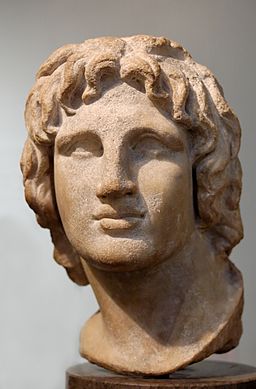- Home
- Cruise Alexandria
- Ancient Alexandria
Ancient Alexandria -
What was it famous for?
"This article is a look back to times when ancient Alexandria was one of the most magnificent cities of the world, home to Alexandria Library and The Lighthouse of Alexandria."
Where is the ancient Alexandria today?
A long stretch of grey concrete buildings with no character, thrown upon each other, pierced here and there with mosque minarets, that’s what you’ll see stretching along the Corniche waterfront as your Mediterranean cruise ship approaches Alexandria port.
Looking at the city from this perspective or riding through its dirty streets on the way to the pyramids, the major attraction for a typical tourist, it is easy to forget, or maybe never know, ancient Alexandria was one of the most extraordinary cities of the ancient world.
You find it hard to envision what life looked like in Hellenistic times' This video can help you:
Who built the ancient city of Alexandria?
Founded by Alexander the Great in 331 BC, ancient Alexandria was soon taken over by the Ptolemies, a dynasty stemming from one of Alexander’s generals.
The time of the Ptolemies and their Egyptian empire coincided with the times of Hellenistic civilization, which exported Greek language and culture around the Mediterranean and Asia.
Thanks to Alexander the Great and his legacy, the world was connected by one cultural and intellectual experience, and the true representative of it was ancient Alexandria.
Why was ancient Alexandria so important?
Supportive of science and learning in general, the Ptolemies promoted Alexandria as a cultural center and invited Greek men of letters to live, study and teach in the peaceful and supportive environment of the Museion and its famous Alexandria Library.
The Alexandrian library was established as a place supposed to contain all of the books of the world, at least those they considered to be worth serious attention.
Pampered by the Ptolemies and having access to all the knowledge of the world, it’s no wonder the learned men who stayed at Alexandria Library take credit for numerous important scientific achievements.
Besides being a learning center for all of the known world at the time, the city was also a major trading center.
Foreign merchants and businessmen shipping glass, papyrus, textiles, agricultural produce, spices and ointments, set up their offices here and this made it a real cosmopolitan city.
Egyptians, Macedonians, Nubians, Jews, Persians, Romans, Syrians and Greeks lived here peacefully side-by-side, each speaking their own language and worshipping their gods.
They say that at the time, ancient Alexandria was far more beautiful than Rome: it’s main road, Canopus, stretched for 5 kilometers. Around the city there were royal palaces, temples, administrative buildings, groves and gardens scattered around.
This is where one of the Seven Wonders of the Ancient World stood, the famous Lighthouse of Alexandria.
If you would like to learn more about what's hiding under the waters around Pharos, where the Lighthouse once stood, read the article on The underwater archaeological investigations of the ancient Pharos and the interview with Jean Yves Empereur, the director of the French Center for Alexandrian Studies in Alexandria, Egypt.
This is where Anthony and Cleopatra loved… in Cleopatra’s palace, now sunken in the harbour of Alexandria.
Did you know that the Egyptian obelisks standing in New York’s Central Park, in London and Paris are also called Cleopatra’s Needles, as they once stood in Caesareum, a temple built by Cleopatra in honor of Mark Anthony.
Although during Roman times ancient Alexandria was more of a provincial capital, when the Arabs arrived in the 7th Ct the marble dazzled them so much they say they had to shield their eyes.
At the time, the city had 4000 palaces, 4000 baths, 400 theatres and 1200 greengrocers!
So, when your bus rolls through the dusty streets of Alexandria, instead of looking at the dilapidated facades you probably won’t like, try to imagine what was happening here over 2000 years ago… you might be passing over the very spot where Alexander the Great’s body lays buried, where Cleopatra once kissed Mark Anthony or where some of the greatest minds of the ancient world lived!
How did ancient Alexandria fall?
Rather than being the result of a single event, the fall of ancient Alexandria was a slow process influenced by many different factors:
- Roman Conquest: The Roman Empire's conquest of Egypt was a major contributing factor. Following the Actium Battle in 30 BCE, Octavian (later Emperor Augustus) defeated Mark Antony and Cleopatra VII, bringing Alexandria under Roman rule. Alexandria lost some of its independence and its position as a major political and economic force, even though it was still a significant city within the Roman Empire.
- Economic Decline: Several factors, such as shifts in trade routes and the rise of rival cities, can be blamed for Alexandria's economic decline. Alexandria's standing as a significant trading hub diminished as the Roman Empire grew and trade routes changed. The growth of other Mediterranean ports and cities, like Constantinople, also played a role in the city's economic decline.
- Political Unrest: Alexandria went through periods of political unrest, including uprisings, disputes, and shifts in governing authority, much like many other ancient cities. The city's capacity to preserve stability and prosperity was hampered by these disruptions.
- Religious Shifts: The fall of ancient Alexandria was partly caused by the advent of Christianity. The city, which was formerly a hub of paganism, had difficulties when Christianity grew throughout the Roman Empire. Alexandria's intellectual and cultural landscape changed as a result of the Christian authorities' destruction of pagan temples and suppression of pagan customs.
- Decline of Scholarship: Alexandria was well known for its scholarly and intellectual endeavors, especially in the areas of philosophy, mathematics, and medicine. But as time went on, several things contributed to the city's declining intellectual standing, such as the collapse of educational institutions, loss of patronage, and political and religious upheavals.
All things considered, the collapse of ancient Alexandria was a complicated process driven by a mix of political, economic, social, cultural elements as opposed to a single cause.
Alexandria remained an important city in the medieval and modern eras despite its decline, albeit in a different form from its heyday.

With over seven years working aboard cruise ships as a port guide and shopper assistant, I’ve helped thousands of passengers get the best from their days ashore in Dubrovnik. Now, I want to make you Med confident!
TAKE A SHORTCUT TO TOP 30 MOST VIEWED PAGES OF 2025:
4. Capri ferry
10. Livorno Italy
13. Naples to Capri
16. Messina Sicily
17. Pisa Train
18. Visiting Pompeii
19. Pompeii forum
20. Port of Piraeus
22. Venice vaporetto
23. Venice water bus
24. Livorno map
25. Getting to Zadar
27. Walk Venice
28. Mykonos beach
29. Lucca Italy
30. Pomepii homes














